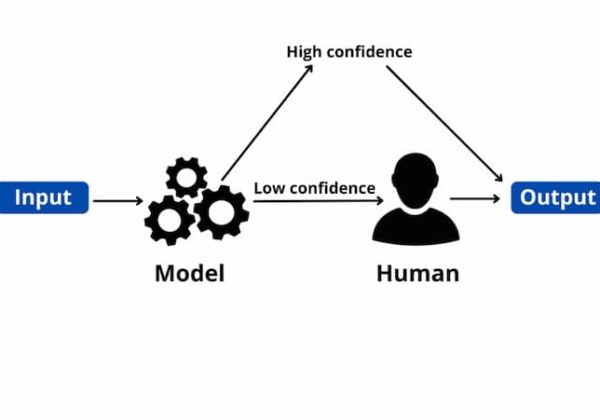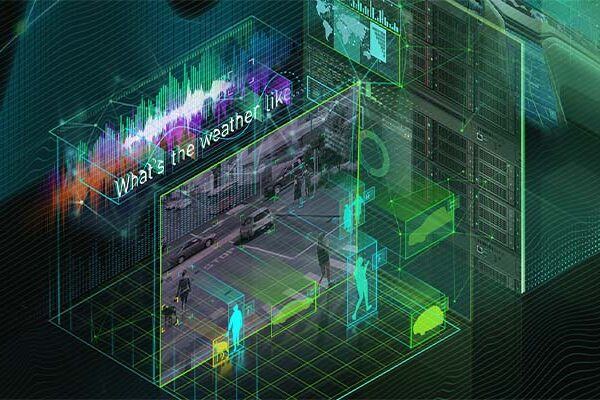Applications for machine learning can be found in a wide range of industries, including healthcare and natural language processing. This revolution is not far behind in the fields of bioinformatics and biology-related disciplines. Before the advent of machine learning, these disciplines faced the problem of extracting valuable insights from large biological datasets. But today, ML techniques such as deep learning can learn the features of complex datasets and present them in a way that is easy to understand.
Table of Contents
What Is Machine Learning?
Machine learning is a subset of artificial intelligence that enables systems to learn from data and perform tasks without being explicitly programmed. While the technology has been around for years, the application of complex mathematical calculations to big data is a more recent development. Here are some widely used machine learning applications you may already be familiar with:
- Personalized product recommendations
- Fraud Detection Technology
- Predictive algorithms are widely used in business intelligence and Industry 4.0 solutions
- Online data analysis and marketing optimization tools
What Is Bioinformatics
Simply put, bioinformatics is the application of computational and analytical techniques to acquire and interpret biological data. It is the intersection between computer science, mathematics, statistics, biology, and genetics. Bioinformatics is mainly used to identify genes and nucleotides for a better understanding of genetic diseases. It is closely related to computational biology. The two terms are frequently used interchangeably. However, they are really two different fields. Let’s focus on these two more closely.
Machine Learning Applications Bioinformatics
Genomics
Genomics is an important field of bioinformatics that focuses on the study of genome mapping, evolution, and editing. The genome is the complete set of genetic material found in an organism. There are three main subsets of genomics;
Regulatory Genomics: Focus on how genome expression is regulated. Machine learning applications in this branch of genomics include the generation of RNA-binding proteins and transcription factors and the prediction and classification of gene expression.
Structural Genomics: It attempts to characterize genome structure using computational and experimental techniques. Machine learning in bioinformatics helps in this section to classify protein structures i.e. primary, secondary, and tertiary structures.
Functional Genomics: In this section, researchers attempt to characterize gene functions and interactions. Machine learning in biology can help classify mutations and protein subcellular localization.
Machine learning methods, combined with natural language processing, allow researchers to analyze large amounts of genomics-relevant biological data. This way, they can easily solve problems like relation extraction and named entity recognition.
Currently, the industry has a wide range of products and services in the commercial sector thanks to machine learning. According to research, the industry is expected to reach a staggering $54.4 billion by 2025[1]. Some applications of ML in genomics include:
Genome sequencing
It plays a key role in medical diagnosis. Machine-learning-enhanced DNA sequencing techniques such as next-generation sequencing [2] have enabled researchers to sequence the human genome in one day compared to traditional Sanger sequencing techniques, which cost ten The human genome has been sequenced over many years.
Gene editing
Gene editing is the process of manipulating the genetic makeup of an organism by inserting, deleting, or replacing DNA sequences. It uses a technique called CRISPR, which is a faster and cheaper method. However, researchers still need to do the work of selecting the correct DNA sequence, which can be a long and error-prone process. Machine learning has come to the rescue by making it easier to identify the correct target audience and dramatically reducing the cost and time required to perform gene editing.
Clinical Workflow
Machine learning has greatly impacted clinical workflows. For example, healthcare personnel has always had problems accessing patient data, which exists in electronic records, paper charts, and other sources. But with the development of ML-enabled technologies, such as Intel’s analytics toolkit, medical facilities can now make the most of outpatient data.
Proteomics
Proteomics is the study of protein components, their interactions, and their role in living organisms. Mass spectrometry-supported proteomics makes it possible to analyze thousands of human proteins. However, computational and experimental challenges limit its development, requiring informatics solutions such as machine learning to analyze and interpret massive biological datasets. Mass spectrometry, an analytical tool for characterizing biological samples, is used in omics research due to its high-throughput activity.
Mass spectrometry does not directly measure the protein in its traditional form, instead, it breaks the protein into smaller blocks of amino acid sequences of about 30 building blocks. They are then compared to databases and amino acids are assigned to specific proteins. The results were not entirely accurate because some proteins were not correctly identified.
Machine learning methods can be used to identify multiple proteins from a given sample. They can be used for:
Mass spectral peaks: Which proteins and peptides were not found when the sample was analyzed? Instead, peaks with high signal intensity were summarized as possible biomarkers.
Identified Protein Search by Sequence Database – Analyzed samples are scanned for peptide blocks, which are then used to identify proteins related to them.
Microarray
A microarray is a laboratory tool used to detect the expression of multiple genes at once. With the increasing popularity of genetic research in animals, plants, and microbes, this technology facilitates the study of genome organization, gene expression, and chromatin structure.
Microarrays consist of different probes (DNA, RNA, tissue, proteins, and peptides) that correspond to specific arrangements of gene fragments, mainly on silicon microchips or glass slides. The theory behind this technique is that complementary sequences will bind to each other under the right conditions, whereas non-contemporary sequences will not. The level of hybridization between contemporary probes is indicated by fluorescence.
The complexity of microarray datasets is rapidly increasing. Large-scale experiments require the simultaneous monitoring of thousands of probes. Machine learning makes it easier to discover important interactions in complex experiments. It is widely used in microarray analysis, with gene classification and clustering being the most cited examples.
For example, the neural design enables researchers to use machine learning methods to discover complex relationships and identify complex patterns in microarray data. And public databases such as Array Express document all information about microarray experiments, making them easily reusable by the research community.
Some applications of machine learning methods on microarrays include:
Genetic analysis: Analysis of changes in gene patterns to determine whether they are normal or caused by a disease.
Differentiate gene stages: Identify the conditions that mutate a gene from a normal state to a diseased state.
Predicting future genetic stages: It develops models that can predict future genetic changes using historical biological data.
Disease Prevention: It helps to discover the relationship between genes and diseases and uses predictive models for early diagnosis and preventive medicine.
Text Mining
Text mining is also known as text analysis. It’s a machine learning-powered technique that uses natural language processing to examine large volumes of documents and discover new information that can help answer research questions.
The increase in biological publications makes it difficult for researchers to search different sources and compile relevant information on a particular topic. Machine learning can process and analyze data through different types of human-generated reports in the database, reducing labor costs and speeding up the research process without compromising quality.
ML text analysis can be used in bioinformatics:
- Large-scale protein and molecular interaction analysis
- Translate content into different languages
- Finding new drug targets (as it requires extracting information stored in biological journals and datasets)
- Automatic annotation of gene and protein functions
- DNA expression array analysis
Systems Biology
Systems biology is the computational and mathematical analysis of the interactions and behavior of biological components such as molecules, cells, organs, and organisms. Computational modeling is a valuable tool used in this discipline. It uses mathematical modeling to capture the interactions between biological components and simulate the behavior of the entire system. However, due to its complexity and lack of proper understanding of the underlying mechanisms, it is difficult to establish stable mathematical models.
But with the use of data-driven machine learning methods, it has become easier to model complex interactions in areas such as signal transduction networks, genetic networks, and metabolic pathways.
Machine learning is helpful for biological systems that have enough biological data but not enough biological knowledge to develop theory-based models. A good example is determining the relationship between phenotype and genotype in Saccharomyces cerevisiae.
Although there are many well-characterized phonemic and genomic strains, theory-based models have not been available to illustrate how genotypic differences determine strain phenotypes. In this context, machine learning is used to establish the relationship between phenotype and genotype by training a supervised model that takes genome as input and phenotype as output. Interpretation of the resulting model hints at the key genetic makeup of the organism. It helps to identify the most critical factors affecting the predictive ability of the model.
One of the most commonly used machine learning techniques in systems biology is probabilistic graphical models. It calculates the structure between different variables and is used to model genetic networks. Another common technique is the genetic algorithm. It is based on natural evolutionary processes and has also been used to model genetic networks and regulatory structures.
Machine learning is also used to solve systems biology problems, such as identifying transcriptional binding sites by using a technique called Markov chain optimization. A Markov chain is a stochastic model that relies on biological data obtained from previous events to describe a sequence of possible events.
Medical Insurance
Machine learning and artificial intelligence are being widely used in healthcare facilities to improve patient care and enhance the quality of life. Soon, hospitals may be able to use machine learning-based technology to obtain real-time data from multiple healthcare systems in different countries to improve treatment efficiency. Some of the major applications of ML in healthcare include:
Drug Discovery and Manufacturing
Machine learning is widely used in the early stages of the drug discovery process. Some of the R&D technologies used include precision medicine and next-generation sequencing. They have been shown to help find alternatives to multifactorial disease treatment.
Medical Imaging and Diagnostics
Deep learning and machine learning have been used in a breakthrough technology called computer vision. This technology has been widely used. One example is Microsoft’s InnerEye project, which builds innovative tools for quantitative analysis of 3D medical images.
Personalized Medicine
Predictive analytics can be used on patient data to facilitate personalized treatment. Currently, doctors are limited to a specific set of diagnoses or are forced to estimate a patient’s disease risk based on a patient’s health history and limited genetic information. However, that could soon change as machine learning makes great strides in medicine by leveraging patient data to help generate a wide range of treatment options.
Stroke diagnosis
Machine learning uses pattern recognition to help diagnose, treat and predict complications of various neurological disorders. Significant progress has been made in the treatment of acute ischemic stroke (AIS) over the past few years. Machine learning algorithms are now being used to predict motor deficits in stroke patients. The most commonly used methods are support vector machines (SVM) and three-dimensional conventional neural networks (CNN).
Final Thoughts
One of the most pressing problems in bioinformatics and biology, in general, is the processing of huge data sets generated by newly developed techniques into meaningful information. However, as we enter the age of artificial intelligence and big data, machine learning in bioinformatics plays a central role in enabling this transition.
This article highlights some fundamental concepts of machine learning and its recent applications in biology and bioinformatics. We have seen that ML can be used to design complex algorithms and models that help predict trends across different biological disciplines. Ultimately, for these models to be successful, they require high-quality data in terms of statistical power and sample size.




